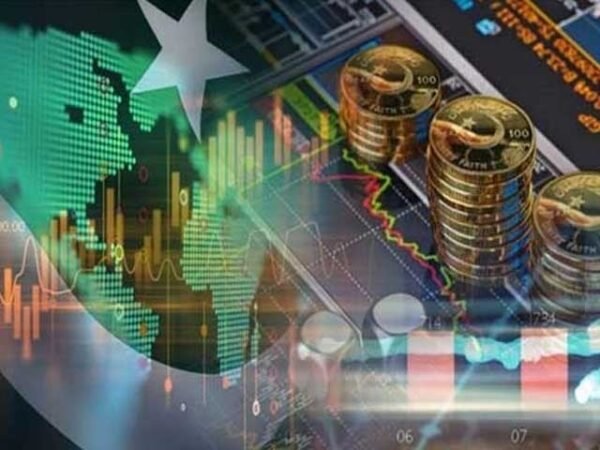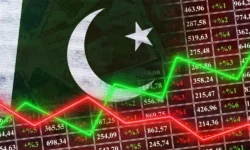STATISTICAL REPORTS ON PAKISTAN’S ECONOMY – A JOURNEY TOWARDS A BRIGHT FUTURE

The recent journey of Pakistan’s economy has been inspirational. Just two years ago,
media outlets and think tanks were predicting Pakistan to be a default country with a
GDP growth rate stagnant in negatives, but now, the situation is otherwise. As the
current fiscal year draws to a close, Pakistan’s financial and economic standing
gets better every month, thanks to sound policy management in various sectors
and the return of inflows from both bilateral and multilateral partners. It cannot
be overlooked that Pakistan has been gallantly fighting war against terrorism for more
than two decades, and it had to bear the brunt in the form of a huge economic loss.
Despite this, Pakistan’s journey towards development is an example of sheer
resilience, which is set to take the country to the level where it can stand head-to-head
with global competitors.
Presently, the economy of many countries is stagnant at negative growth rate due to
the changing global spectrum, whereas the World Bank has noted that Pakistan’s
economy will grow by 2.4 percent in current financial year. Moreover, the 2024
Economic and Social Survey of Asia and the Pacific region, released by the UN
Economic and Social Commission for Asia and the Pacific (UN-ESCAP), projected an
acceleration in the country’s economic growth for the current year and the next, with
real GDP growth of two percent and 2.3 percent respectively. In March 2024, the
Global Economic Outlook (GEO) Fitch Ratings increased its prediction for
global GDP growth in 2024 by 0.3 percentage points to 2.4 percent from its
previous estimate of 2.1 percent in December 2023. It is evident from a change
in the estimates presented in the Global Economic Outlook (GEO) Fitch Ratings
that Pakistan’s economy is growing at a more rapid pace than these forecasts.
A line graph published by Federal Reserve Bank of New York better illustrates the way
Pakistan’s GDP growth rate has risen from 0.74% in March 2023 to 2.02% in March
2024.
.
The Monthly Economic Update and Outlook for March 2024 presents a detailed
overview of a growing economy and supplements the above-mentioned reports. The
current account deficit for July–February of FY2024 was $1.0 billion, compared
to $3.9 billion in the previous year. This difference can be attributed mostly to
improvements in the trade balance. The current account showed a $128 million
surplus in February 2024 compared to a $50 million loss during the same month the
previous year. In January 2024, Large Scale Manufacturing increased by 1.8 percent,
up against the decline of 5.6 percent in the same month last year. Net federal
revenues increased by 57.0 percent from Rs 2798 billion to Rs 4379 billion during
the July–January fiscal year of 2024. The remarkable growth in non-tax collection,
which jumped by 105% to reach Rs 2140 billion from Rs 1046 billion the previous
year, was the main driver of the sharp increase in revenues. In February 2024, FDI
inflows totaled $131,2 million, whereas outflows of $173,3 million took place in
January. Remittances are likewise increasing; in February 2024, they reached a
total of $2.2 billion, up 13.0% from the previous year’s $1.9 billion. It is visible that
the government is putting all its efforts to ensure prudent fiscal management through
cautious expenditure and active resource mobilization.
Pakistan, being an agrarian country, is efficiently flourishing its agriculture sector,
despite the heavy losses it has endured due to the floods of 2022 and 2023. The
Foreign Agricultural Service (FAS) of the US Department of Agriculture, in its
April 1st
, 2024 report noted that Pakistan is forecast to import only 1 million tons
of wheat in 2024-25, less than one-third of the projected total in 2023-24. The
goal of sowing 8.998 million hectares of wheat has been surpassed in the Rabi season
2023–2024. In FY2024, tractor sales and production increased by 67.6 percent and
68.6 percent, respectively, demonstrating the remarkable expansion of farm inputs.
Disbursements from agriculture loans increased by 34.7 percent to Rs 1,279.4
billion.
The abundance of natural resources, which are being tapped, catalyzes Pakistan’s
journey to be self-sufficient. For example, the Reko-Diq project, which deals in
copper and gold, provides 5.9 billion tons of ores and mining life of 40 years.
The estimated annual amount gained from these projects will be 3 billion dollars
for copper and 600 million dollars for gold. Similarly, the role of SIFC has been
praiseworthy for helping the government deliver to the populace, as the council is
determined to bring the investment of $60billion in the period of next five years. It is
noteworthy that these investments, alone, are equal to the entire $60 billion CPEC
project, and are destined help Pakistan in being a self-sufficient country.
The strain on gross financial needs, which had been exacerbated by rising
domestic and international financing demands as well as an unpredictable
external environment, is lessening as a result of continuous policy and reform
initiatives. A robust economic rebound and an increase in the nation’s general
economic confidence are the results of these encouraging developments. All
stakeholders, across the board, be it the civilian leadership or the security apparatus,
are working creatively on this journey of resilience. The current government setup
needs to run its course to have consistency in policies and administration. It is
imperative for the people of Pakistan to have trust in the state’s administration and
institutions as they are resilient in steering Pakistan towards a bright future.





